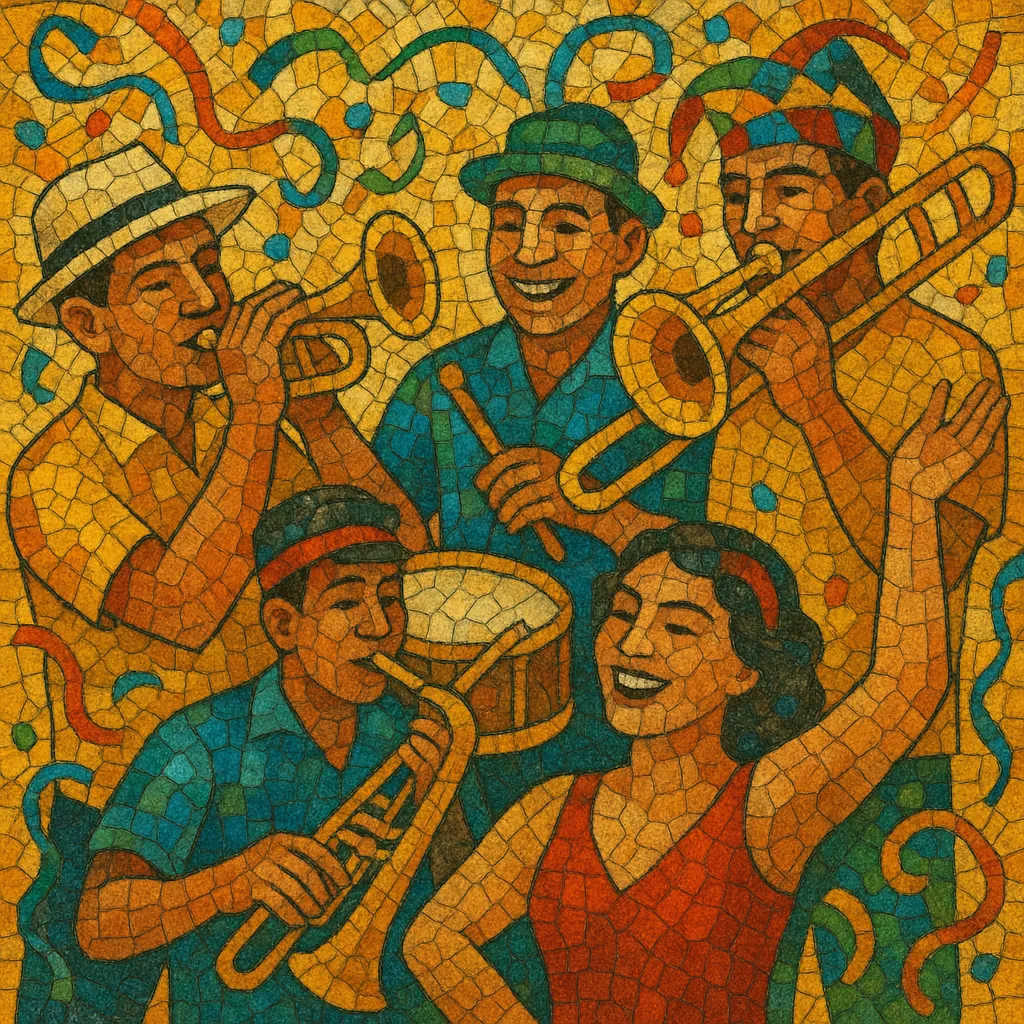
Marchinha (marchinha de carnaval) is the classic, breezy song form of Brazil’s Carnival, especially associated with Rio de Janeiro’s street festivities.
It is light, catchy, and built for mass singalongs, typically set in a jaunty 2/4 march pulse with simple, diatonic harmonies and a memorable refrain (estribilho).
Lyrics are humorous, satirical, and playful—full of puns, double entendres, and topical references—inviting call-and-response between band and crowd.
Instrumentation draws on small brass/woodwind bands (banda de coreto) plus percussion, creating an upbeat, processional feel designed for dancing in blocos and parades.
The marchinha crystallized around the Rio Carnival at the turn of the 20th century. A milestone was Chiquinha Gonzaga’s “Ô Abre Alas” (1899), often cited as the first Carnival march, which set the template of a lively 2/4 pulse, a bright chorus, and lyrics made to be shouted in the streets.
With the rise of radio and the recording industry, marchinhas became national hits. Composers and performers like Lamartine Babo, Braguinha (João de Barro), Almirante, and Assis Valente crafted witty, crowd-friendly songs that defined the sound of Carnival. Classics such as “A Jardineira” (Benedito Lacerda/Humberto Porto) and “Alá-lá-ô” (Haroldo Lobo/Nássara) exemplify the genre’s humor and singability.
Marchinhas capture a spirit of playful social commentary—poking fun at fashions, politicians, and everyday life—while remaining inclusive and danceable. Their easily memorized refrains, call-and-response hooks, and brass-led grooves made them perfect for street processions and for radio-era mass appeal.
From the 1950s onward, samba-enredo (within samba schools), bossa nova, MPB, and later axé drew attention away from marchinha in the mainstream, but the style never disappeared. It persisted in children’s carnivals, street blocos, and nostalgic revivals. Modern composers like João Roberto Kelly helped keep the tradition alive with new Carnival hits, ensuring marchinha remains a beloved pillar of Brazil’s festive heritage.

